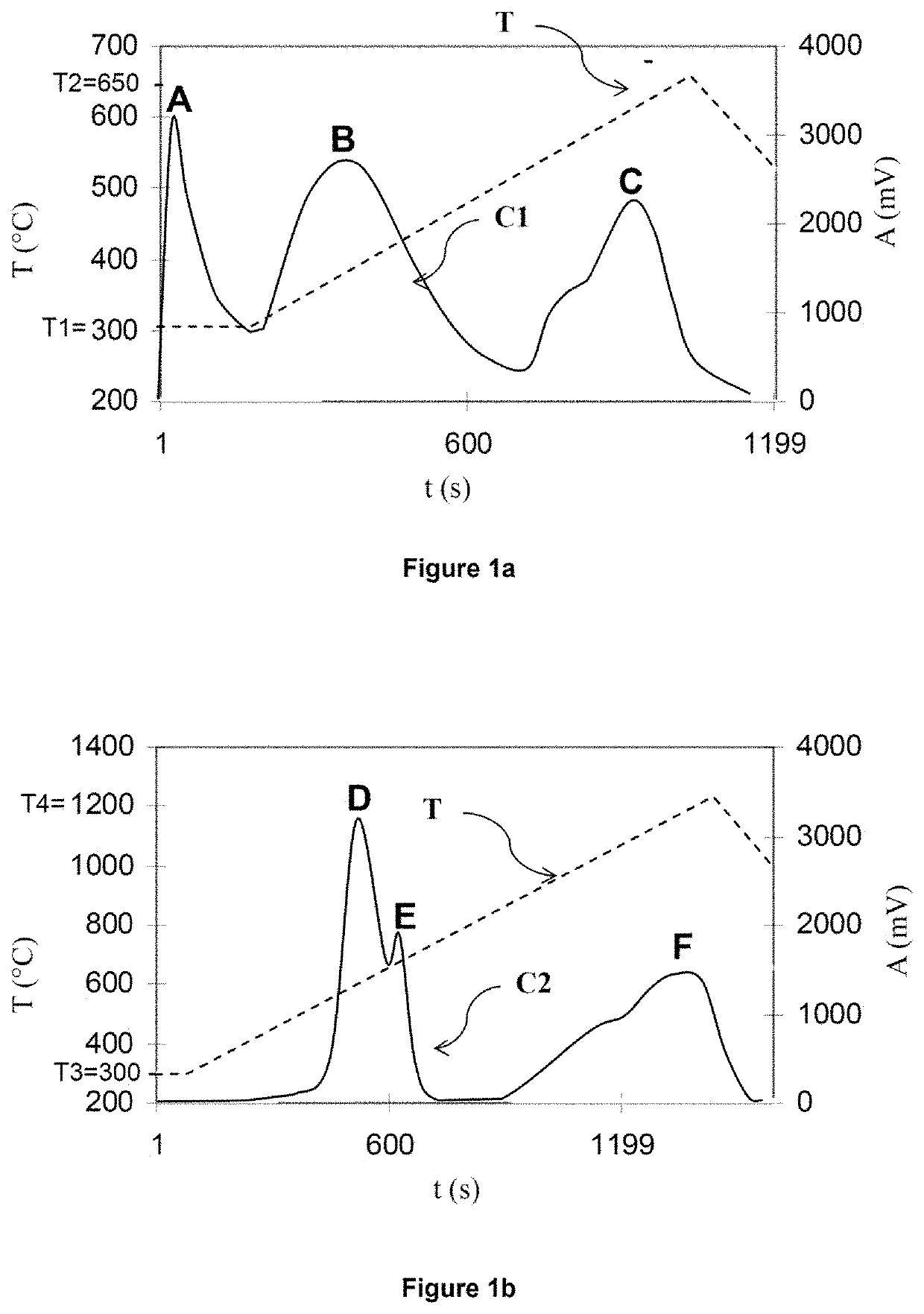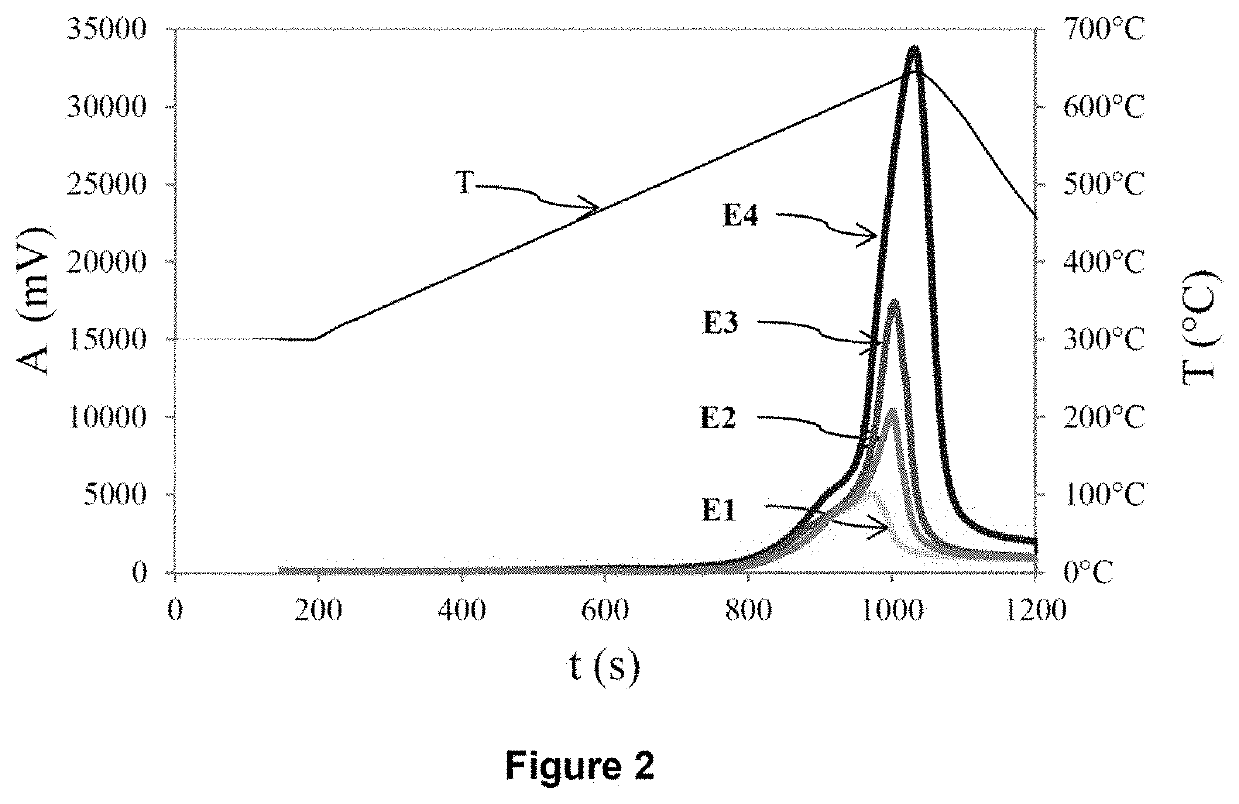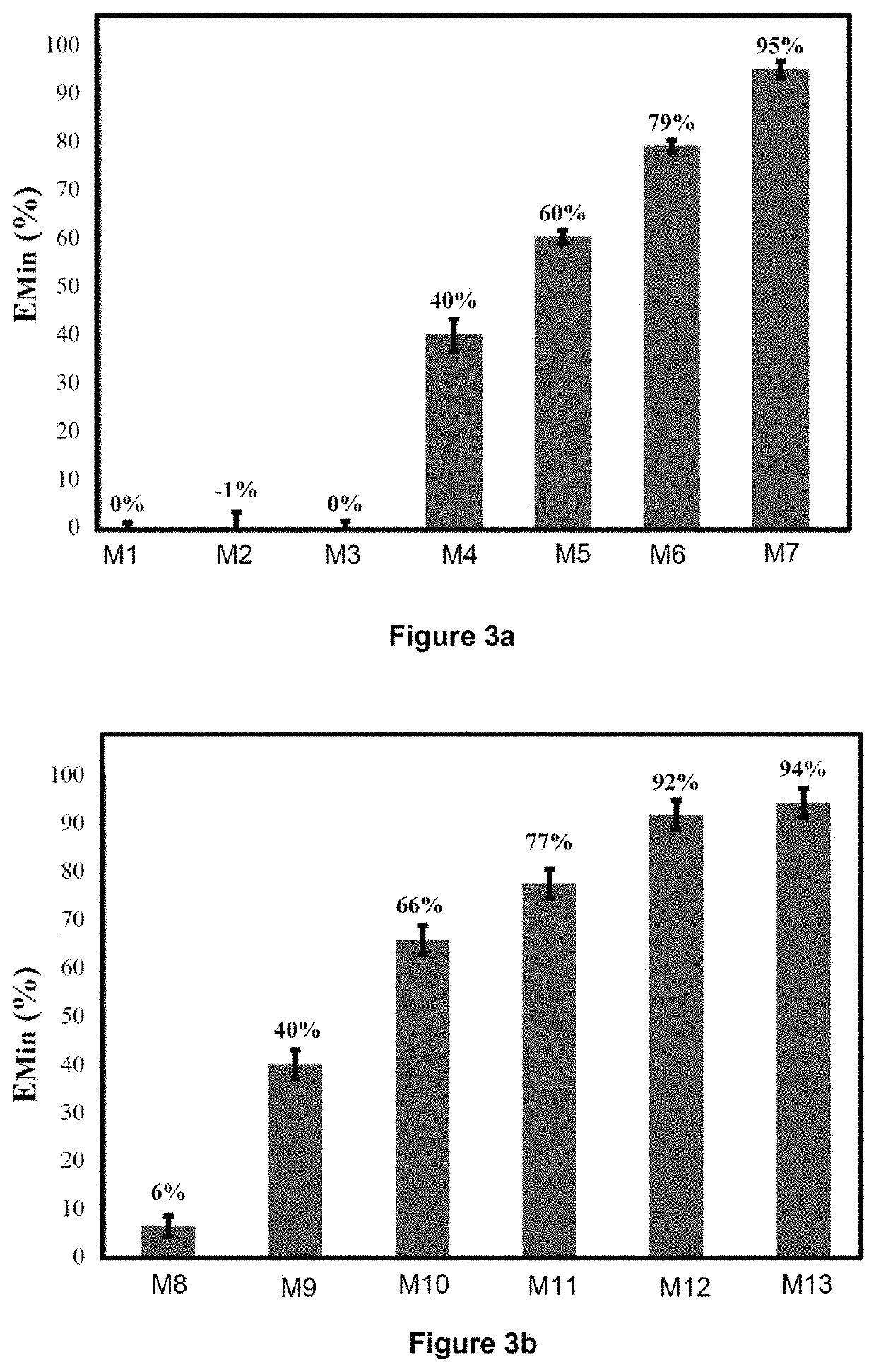Process for quantifying the pyritic sulfur and the organic sulfur of a rock sample
a technology of which is applied in the field of process for quantifying the organic sulfur and pyritic sulfur of a rock sample, can solve the problems of laborious and dangerous chemical separation steps, difficult measurement, and high cost of equipmen
- Summary
- Abstract
- Description
- Claims
- Application Information
AI Technical Summary
Benefits of technology
Problems solved by technology
Method used
Image
Examples
application examples
[0282]The application example below aims to evaluate the quality of the results obtained by carrying out the process according to the invention. To do this, various mixtures are produced, formed from nine samples of sedimentary rocks containing only organic sulfur, this being in a known amount, to which known weights of pyrite are added. The rock samples originate from three different formations (“Orbagnous”, “Phosphoria” and “Limagne”) and were taken from various levels of these formations. The characteristics of these nine samples of sedimentary rocks are summarized in the first nine rows of Tables 1a and 1b below. Different weights of pyrite were added to these nine samples, according to the characteristics summarized in rows 10 and 11 of Tables 1a and 1b below. In this way, 14 mixtures of “pyrite+Orbagnous” type (type subsequently denoted EXA), 6 mixtures of “pyrite+Phosphoria” type (type subsequently denoted EXB), and 8 mixtures of “pyrite+Limagne” type (type subsequently denot...
PUM
| Property | Measurement | Unit |
|---|---|---|
| temperature | aaaaa | aaaaa |
| temperature | aaaaa | aaaaa |
| temperature | aaaaa | aaaaa |
Abstract
Description
Claims
Application Information
 Login to View More
Login to View More - R&D
- Intellectual Property
- Life Sciences
- Materials
- Tech Scout
- Unparalleled Data Quality
- Higher Quality Content
- 60% Fewer Hallucinations
Browse by: Latest US Patents, China's latest patents, Technical Efficacy Thesaurus, Application Domain, Technology Topic, Popular Technical Reports.
© 2025 PatSnap. All rights reserved.Legal|Privacy policy|Modern Slavery Act Transparency Statement|Sitemap|About US| Contact US: help@patsnap.com



